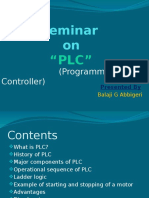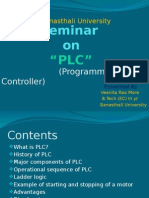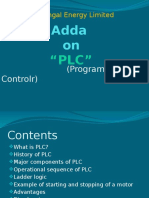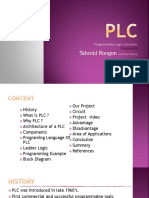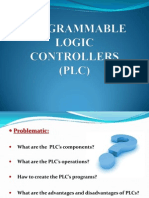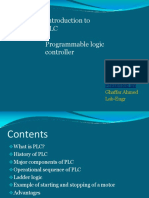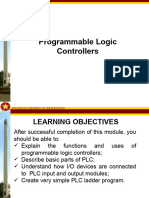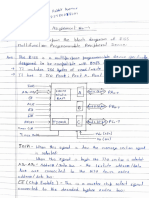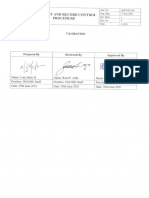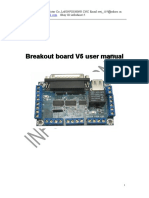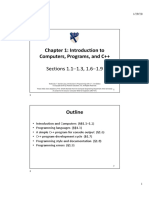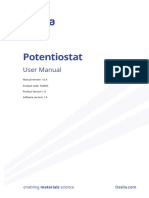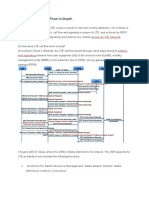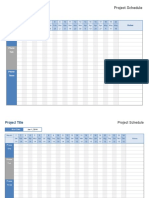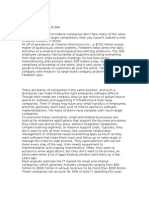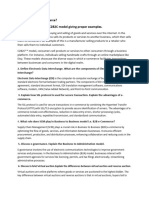0% found this document useful (0 votes)
44 views13 pagesOn PLC Programming
The presentation provides an overview of Programmable Logic Controllers (PLCs), detailing their definition, major components, operation sequence, programming languages, advantages, and applications. PLCs are digital devices designed for industrial environments that monitor inputs and control outputs based on user-written programs. They are widely used in automation across various industries, including food and beverage, material handling, and robotics.
Uploaded by
Robby KumarCopyright
© © All Rights Reserved
We take content rights seriously. If you suspect this is your content, claim it here.
Available Formats
Download as PPTX, PDF, TXT or read online on Scribd
0% found this document useful (0 votes)
44 views13 pagesOn PLC Programming
The presentation provides an overview of Programmable Logic Controllers (PLCs), detailing their definition, major components, operation sequence, programming languages, advantages, and applications. PLCs are digital devices designed for industrial environments that monitor inputs and control outputs based on user-written programs. They are widely used in automation across various industries, including food and beverage, material handling, and robotics.
Uploaded by
Robby KumarCopyright
© © All Rights Reserved
We take content rights seriously. If you suspect this is your content, claim it here.
Available Formats
Download as PPTX, PDF, TXT or read online on Scribd
/ 13


